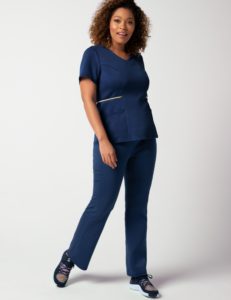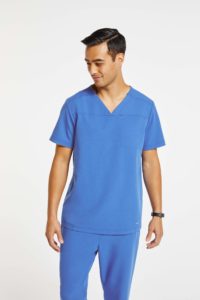
The 17 Main Responsibilities of a Licensed Practical Nurse (LPN)
If you’re unsure of where or how to start your nursing career, an entry-level role in the field is the best place to begin. Becoming a licensed practical nurse (LPN) is a great way to gain experience without spending too much time in school.
You’ll learn (and perform) all the basics for this career. You’ll acquire a solid knowledge of medical terminology while honing your decision-making and communication skills. You’ll gain confidence by learning how to react quickly in an emergency.
So, what exactly is a licensed practical nurse, and what does an LPN do (and where)? We’re here to explain all that (and more!), so read on for more information on this role.
What is an LPN (licensed practical nurse)?

Licensed practical nurses provide hands-on care and perform basic tasks. They are not required to complete the same level of education as a registered nurse (RN), which means that their work is not as specialized as that of other fields.
Allow us to give you a more detailed LPN job description by highlighting a few of their essential duties. Some of their tasks include checking vital signs, bathing patients and informing doctors and RNs of patients’ status.
To hold this role, you’ll have to complete a degree program in nursing, which takes about a year. You’ll also need to show a certain amount of clinical experience.
Where can LPNs work?
Can an LPN work in a hospital? What about a nursing home? The answer to these two questions is “yes,” but check out our more comprehensive list below.
LPNs can find work in many places, including:
- Hospitals
- Psychiatric facilities
- Surgical facilities
- Maternity wards
- Emergency rooms
- Nursing homes
- Private homes
The 10 of the most common duties of a licensed practical nurse

If you decide to pursue this role, what exactly would you be doing while on the job? What are the primary LPN responsibilities? Read on for the 10 most common duties of a licensed practical nurse.
- Supporting RNs and physicians on rounds
- Doing health assessments
- Helping patients bathe, eat and dress
- Helping administer medication (in at-home and healthcare settings)
- Admitting patients (or residents, in the case of a nursing home)
- Monitoring patients’ vital signs and taking readings like blood pressure
- Helping with rehab exercises and routines
- Dressing wounds and changing bandages
- Keeping up with patient documentation (and keeping it confidential)
- Working with doctors and RNs to fulfill care plans and communicating patient information and progress
The seven skills of a licensed practical nurse
Ready to become an LPN? We bet you have all the qualities and skills that would make you perfect for this role, but read on to learn more.
- Nursing 101 skills: In this versatile but less-specialized role, LPNs take care of basic, routine tasks, so you’ll need to have a broad education base and stay current on new information.
- Attentiveness: We mean this in two ways. LPNs are attentive to patient needs and details, but they are also empathetic, focused people overall. They are great observers who are on the lookout for warning signs in their patients.
- Energy: Licensed practical nurses are on their feet all day, including in emergencies and high-stress situations. Their shifts can also run long, so you’ll need stamina (of both body and mind) to do this work. You’ll also need comfortable shoes and scrubs.
- The ability to talk “the talk”: LPNs are communicative, and they serve as a link between patients and physicians. That means they need to transmit messages correctly and efficiently.
- A knack for staying cool under pressure: Keep calm and nurse on. That’s the motto of a role where you’ll be working in high-pressure emergencies or pulling long hours. Not all LPN roles are in high-stress environments, but keeping a level head when assessing a patient’s condition is important no matter where you are.
- Understanding confidential information: You’ll have access to sensitive patient information that you’ll need to keep confidential and respect, so honesty and ethics are central to this role.
- The ability to work in a team: LPNs rarely go it alone, at least not when it comes to patient care plans. You’ll likely be working as part of a team of nurses and physicians and consulting and communicating with them frequently about patients’ conditions, so strong interpersonal skills are a major plus.
Alternative careers for LPNs

If working as a nurse in a more traditional healthcare setting like a hospital or nursing home isn’t your thing, there are several other career paths in which you could apply your LPN knowledge. Consider using your LPN status to develop your career in one of the following ways.
- Patient advocate
- Healthcare writer
- Physical therapist
- Consultant (on healthcare topics)
- Medical biller
- Wellness/health educator or consultant
- Pharmaceutical sales representative
- Midwife
- Content writer (on healthcare topics)
- Recruiter (for healthcare careers)
What is the career outlook for LPNs?
Nurses are generally in high demand, and jobs for practical nurses are no exception. The world will always need healthcare professionals, which means that even if the demand isn’t growing, job security is generally great.
The LPN career is expected to experience a 9% growth rate by 2030. That stat goes for all nursing careers, just in case you’re thinking about taking a different path.
Financially conscious? We get it, and we think it’s wise to look at the numbers before you decide on a career. In the United States, the median annual salary for an LPN in 2020 was $48,820.
Remember, when supporting healthcare professionals working long, stressful hours, remember, we’ve always got your back (as do our compression scrubs).